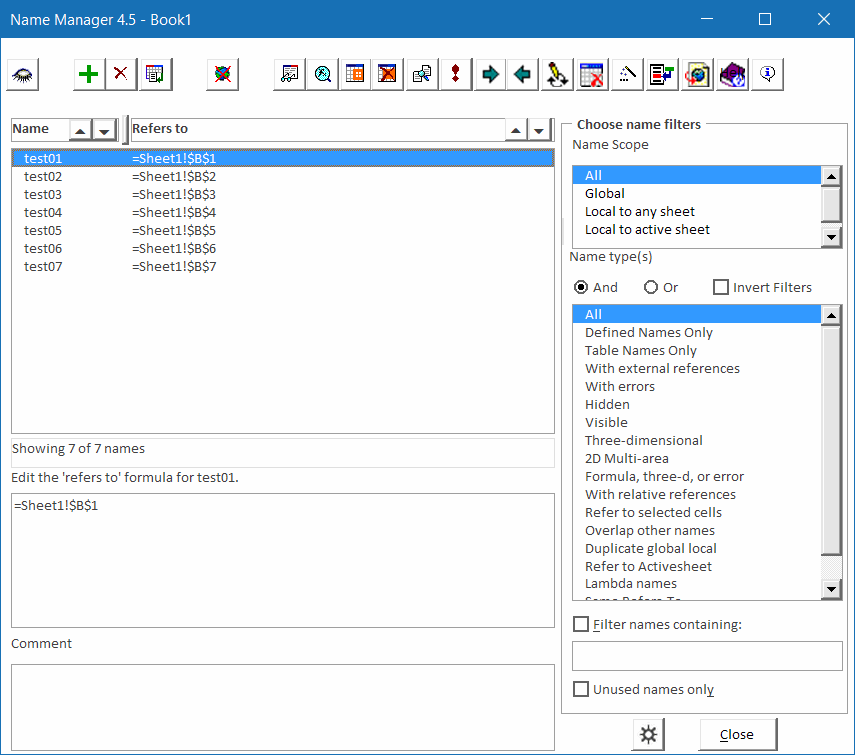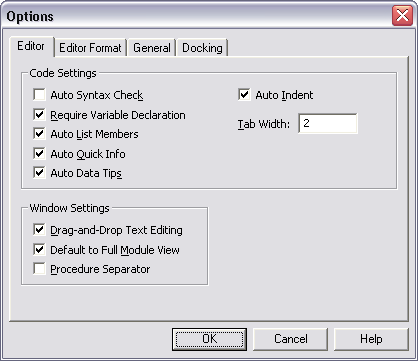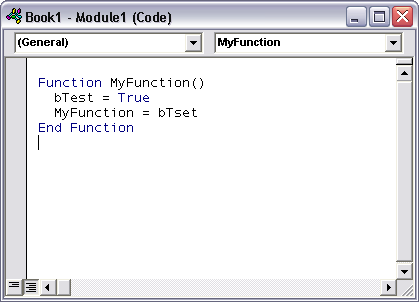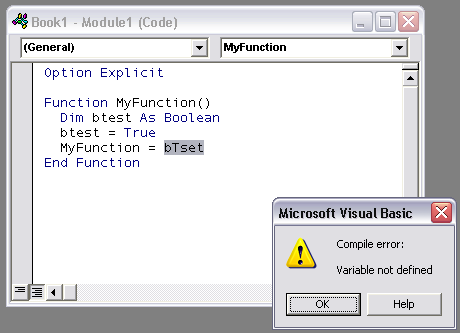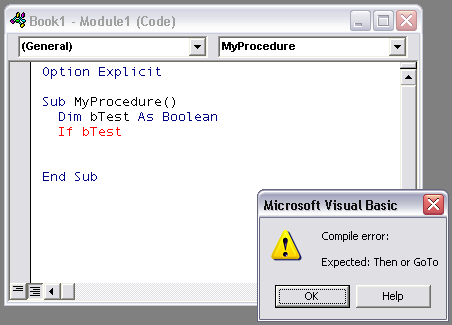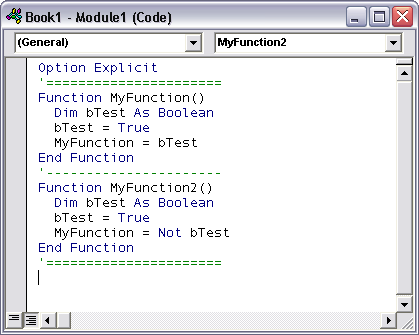Mathias Brandewinder of Clear Lines Blog tweeted up Displaying a List of All VBA Procedures in an Excel 2007 Workbook from the Ribbon, an article by Microsoft’s Frank Rice on the MSDN web site, which showed a VBA procedure for listing all of the VBA procedures in a VB project. Interesting procedure, could be very useful.
Not being able to leave anything alone, I made some changes to how the procedure worked. The original put its list of procedures into a dialog, and when the dialog was closed, the list evaporated. I changed the output so that the list is dumped into a new worksheet inserted just for this purpose.
I broadened the scope of the procedure, so that it lists all procedures in all VB projects, not just the active one. The first two rows of the output sheet contain the names of the parent workbook and of the project.
If the project is protected, you’ll get an error if you try to look inside, so my code bypasses the error and notes that the project is protected. My code also notes when there isn’t any code in a project.
I also didn’t find the original variable names useful, so I used some which were more descriptive, to me at least.
Here’s my modified procedure, for what it’s worth.
'' Based on: '' Displaying a List of All VBA Procedures in an Excel 2007 Workbook '' from the Ribbon (June 2009) '' by Frank Rice, Microsoft Corporation '' http://msdn.microsoft.com/en-us/library/dd890502(office.11).aspx# '' set a reference to the Microsoft Visual Basic for Applications Extensibility 5.3 Library Sub GetProcedures() ' Declare variables to access the Excel workbook. Dim app As Excel.Application Dim wb As Excel.Workbook Dim wsOutput As Excel.Worksheet Dim sOutput() As String Dim sFileName As String ' Declare variables to access the macros in the workbook. Dim vbProj As VBIDE.VBProject Dim vbComp As VBIDE.VBComponent Dim vbMod As VBIDE.CodeModule ' Declare other miscellaneous variables. Dim iRow As Long Dim iCol As Long Dim iLine As Integer Dim sProcName As String Dim pk As vbext_ProcKind Set app = Excel.Application ' create new workbook for output Set wsOutput = app.Workbooks.Add.Worksheets(1) 'For Each wb In app.Workbooks For Each vbProj In app.VBE.VBProjects ' Get the project details in the workbook. On Error Resume Next sFileName = vbProj.Filename If Err.Number <> 0 Then sFileName = "file not saved" On Error GoTo 0 ' initialize output array ReDim sOutput(1 To 2) sOutput(1) = sFileName sOutput(2) = vbProj.Name iRow = 0 ' check for protected project On Error Resume Next Set vbComp = vbProj.VBComponents(1) On Error GoTo 0 If Not vbComp Is Nothing Then ' Iterate through each component in the project. For Each vbComp In vbProj.VBComponents ' Find the code module for the project. Set vbMod = vbComp.CodeModule ' Scan through the code module, looking for procedures. iLine = 1 Do While iLine < vbMod.CountOfLines sProcName = vbMod.ProcOfLine(iLine, pk) If sProcName <> "" Then iRow = iRow + 1 ReDim Preserve sOutput(1 To 2 + iRow) sOutput(2 + iRow) = vbComp.Name & ": " & sProcName iLine = iLine + vbMod.ProcCountLines(sProcName, pk) Else ' This line has no procedure, so go to the next line. iLine = iLine + 1 End If Loop ' clean up Set vbMod = Nothing Set vbComp = Nothing Next Else ReDim Preserve sOutput(1 To 3) sOutput(3) = "Project protected" End If If UBound(sOutput) = 2 Then ReDim Preserve sOutput(1 To 3) sOutput(3) = "No code in project" End If ' define output location and dump output If Len(wsOutput.Range("A1").Value) = 0 Then iCol = 1 Else iCol = wsOutput.Cells(1, wsOutput.Columns.Count).End(xlToLeft).Column + 1 End If wsOutput.Cells(1, iCol).Resize(UBound(sOutput) + 1 - LBound(sOutput)).Value = _ WorksheetFunction.Transpose(sOutput) ' clean up Set vbProj = Nothing Next ' clean up wsOutput.UsedRange.Columns.AutoFit End Sub


